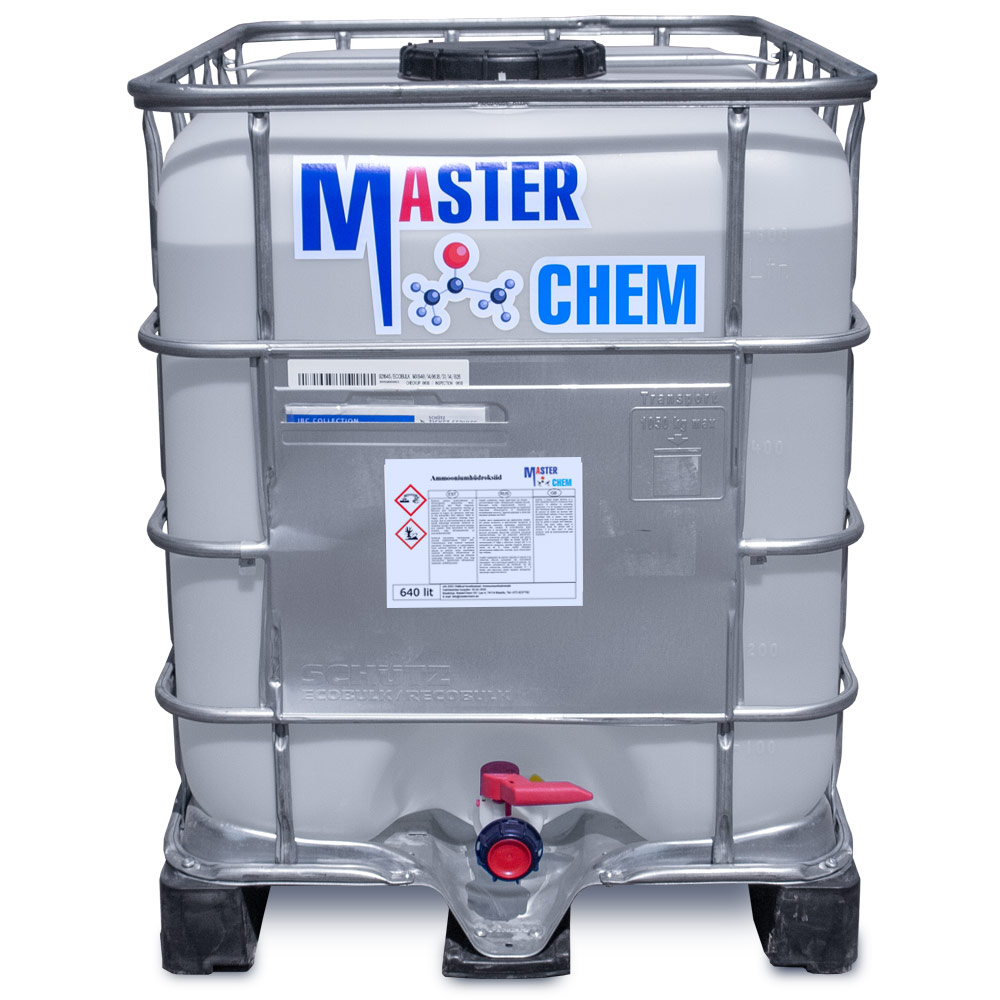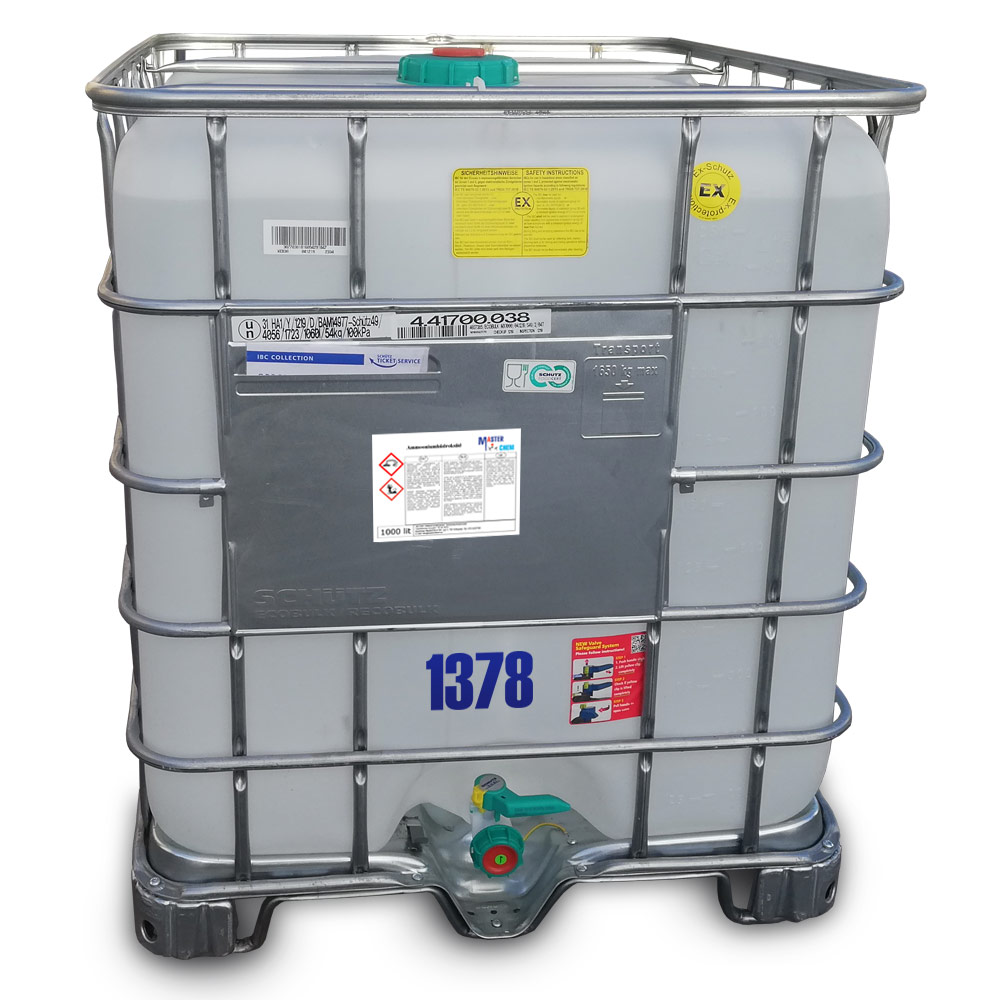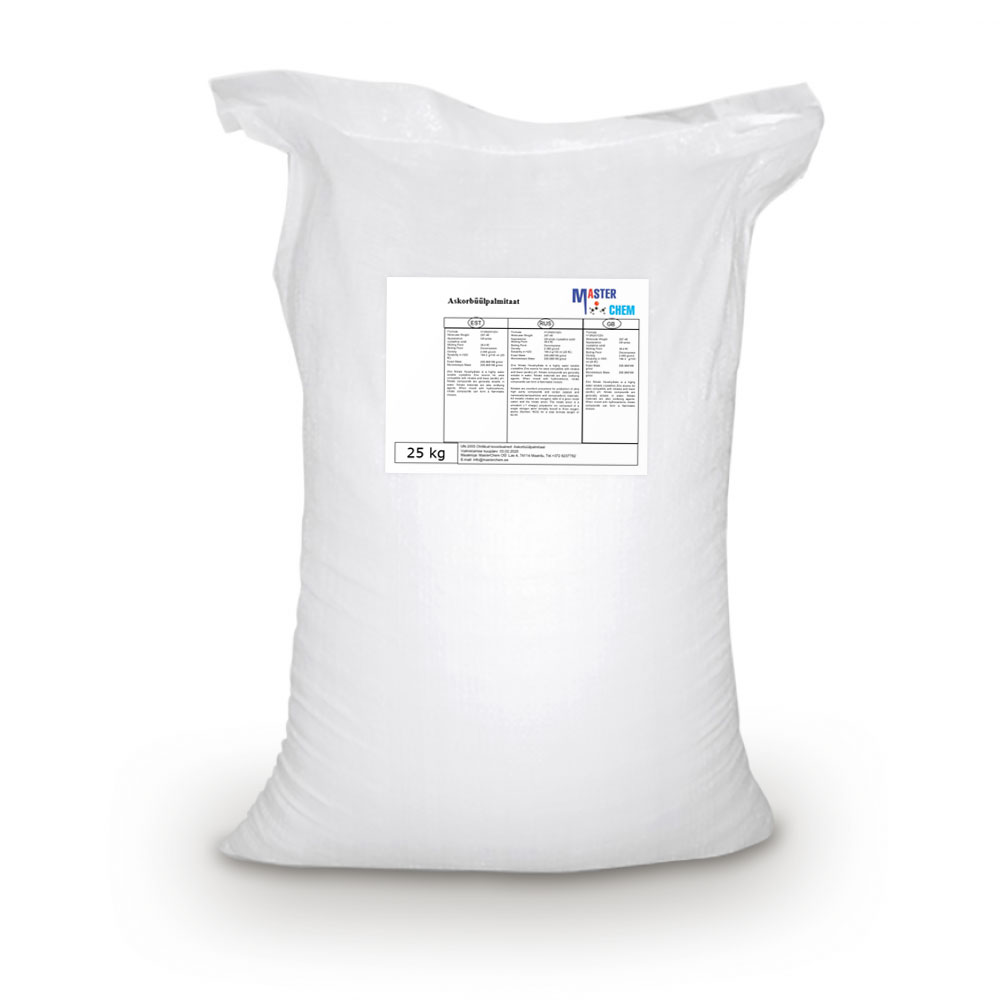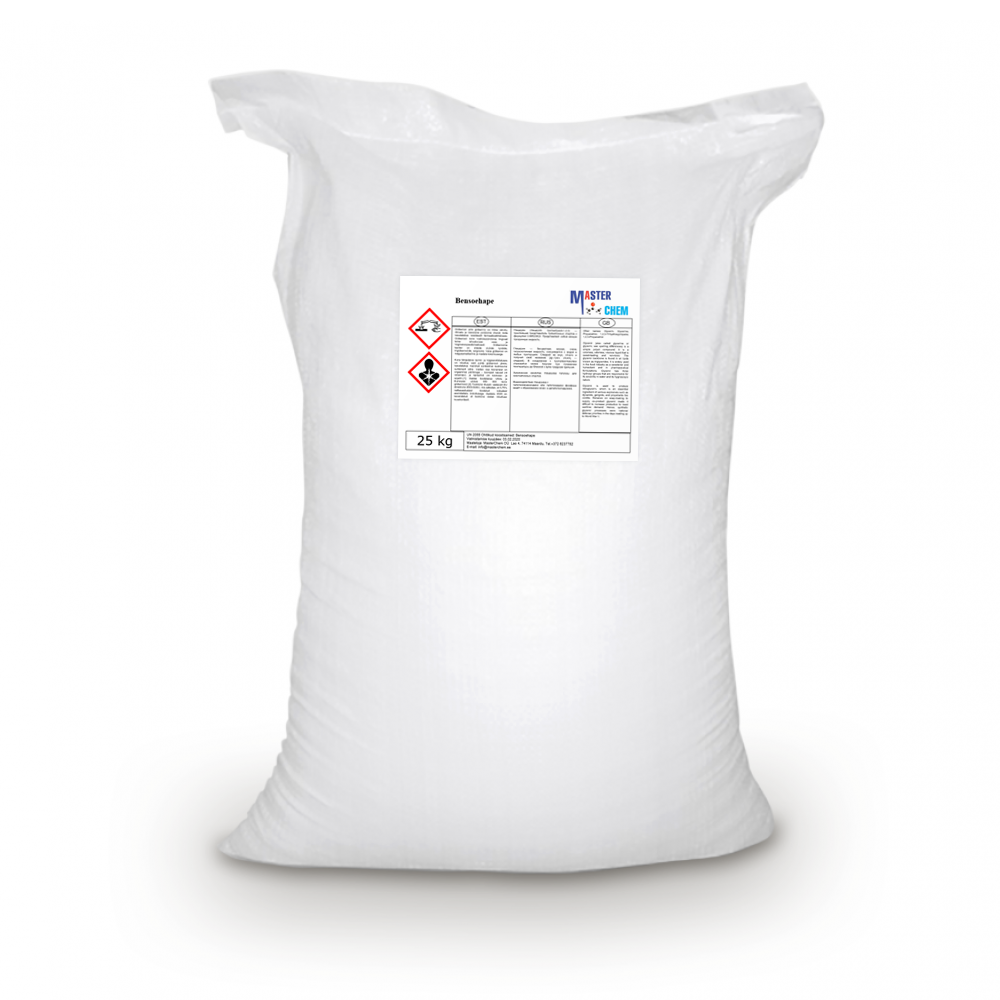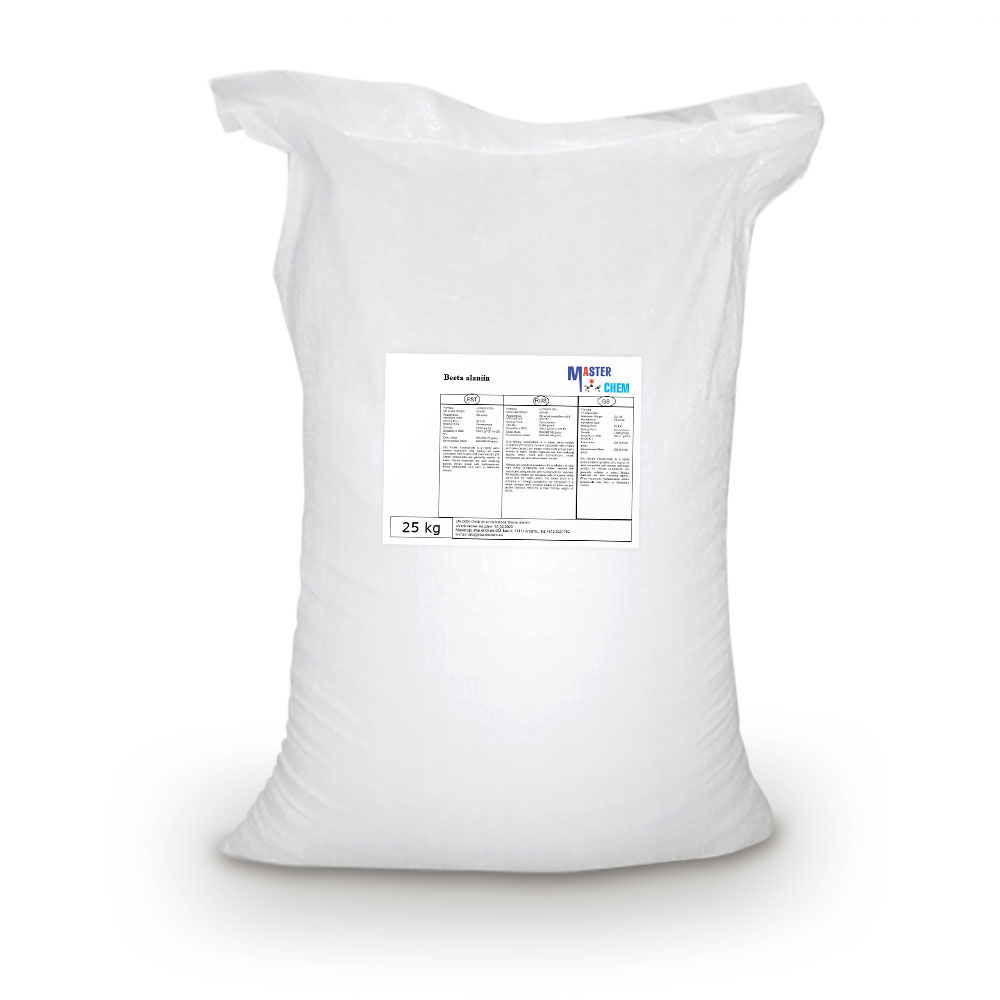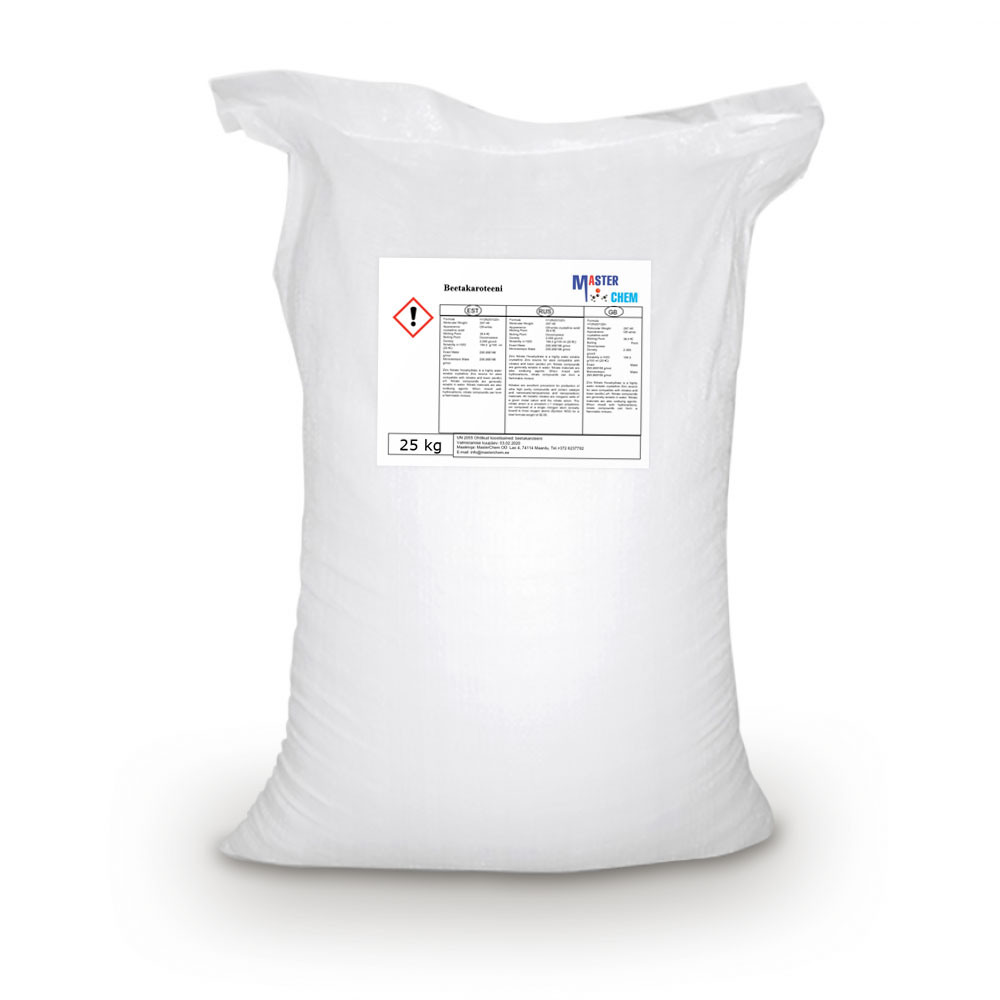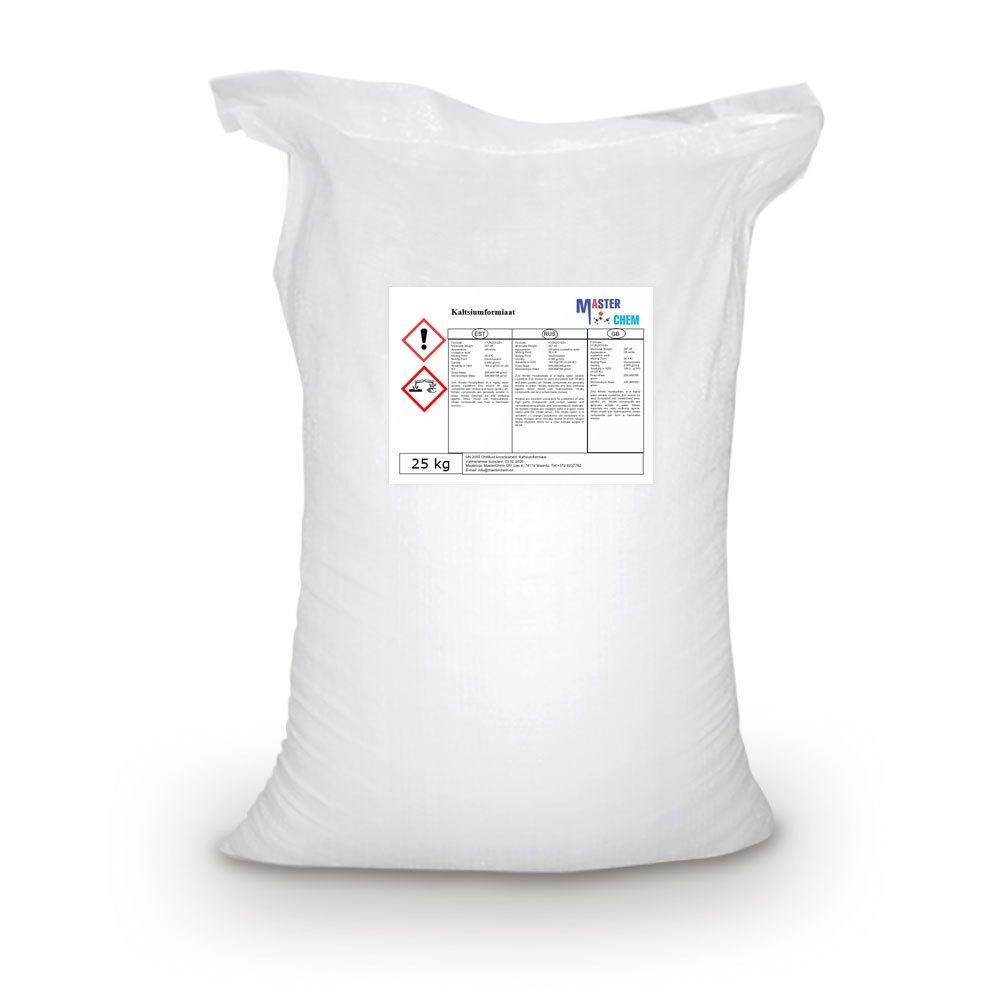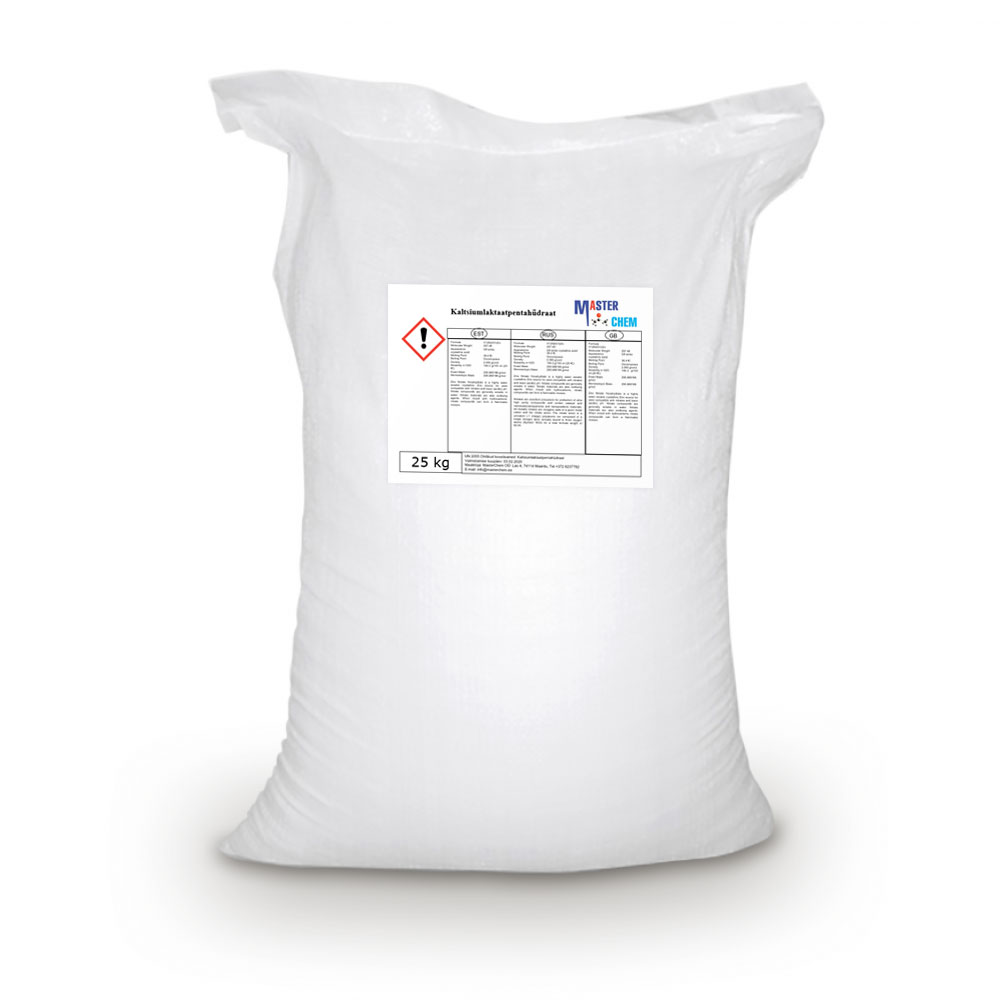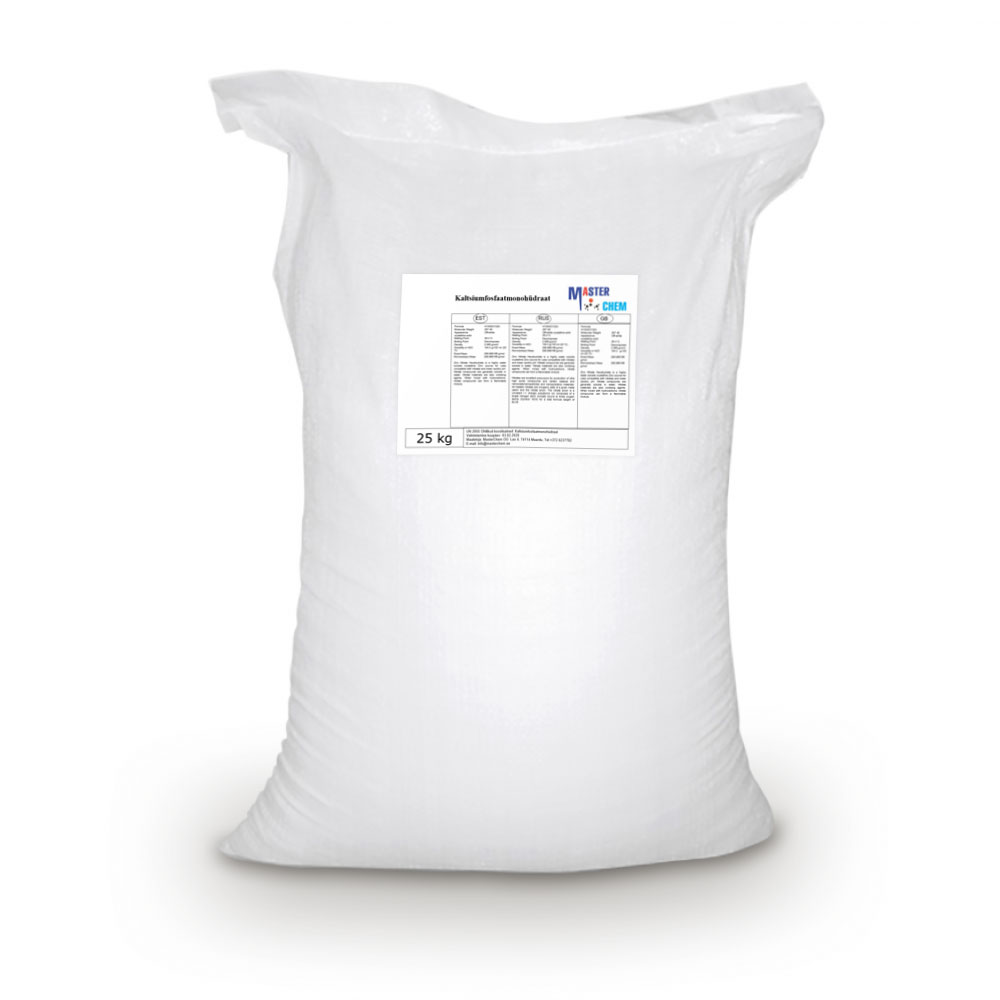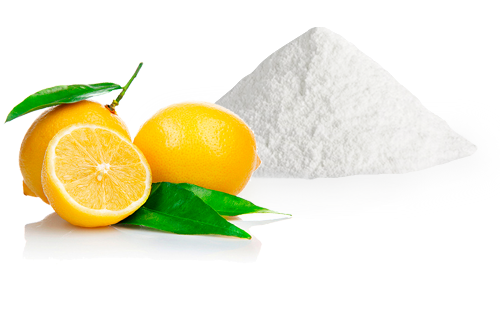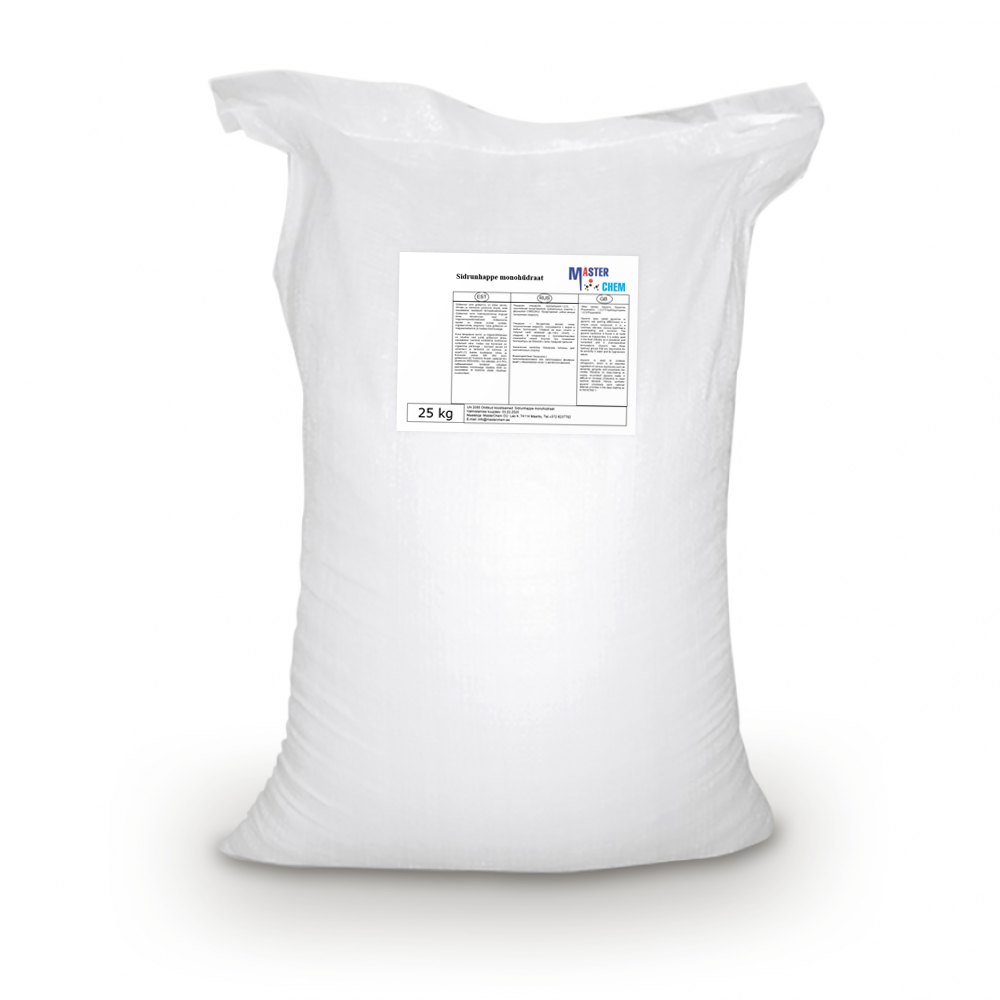Currently Empty: €0.00
Ammonia solution (CAS 1336-21-6)
Ammonia solution (CAS 1336-21-6)
Ammonia solution, also known as ammonia water, ammonium hydroxide, ammoniacal liquor, ammonia liquor, aqua ammonia, aqueous ammonia, or (inaccurately) ammonia, is a solution of ammonia in water. It can be denoted by the symbols NH3(aq). Although the name ammonium hydroxide suggests an alkali with composition [NH4+][OH−], it is actually impossible to isolate samples of NH4OH. The ions NH4+ and OH− do not account for a significant fraction of the total amount of ammonia except in extremely dilute solutions.
Diluted (1–3%) ammonia is also an ingredient of numerous cleaning agents, including many window cleaning formulas. Because aqueous ammonia is a gas dissolved in water, as the water evaporates from a window, the gas evaporates also, leaving the window streak-free.
In addition to use as an ingredient in cleansers with other cleansing ingredients, ammonia in water is also sold as a cleaning agent by itself, usually labeled as simply “ammonia”. It may be sold plain, lemon-scented (and typically colored yellow), or pine-scented (green). Commonly available ammonia with soap added is known as “cloudy ammonia”.
Ascorbyl palmitate (CAS 137-66-6)
Ascorbyl palmitate (CAS 137-66-6)
Ascorbyl palmitate is an ester formed from ascorbic acid and palmitic acid creating a fat-soluble form of vitamin C. In addition to its use as a source of vitamin C, it is also used as an antioxidant food additive (E number E304). It is approved for use as a food additive in the EU, the U.S., Canada, Australia, and New Zealand.
Ascorbyl palmitate is also marketed as “vitamin C ester”. It is synthesized by acylation vitamin C using different acyl donors.
Benzoic acid (CAS 65-85-0)
Benzoic acid (CAS 65-85-0)
Benzoic acid /bɛnˈzoʊ.ɪk/ is a white (or colorless) solid with the formula C6H5CO2H. It is the simplest aromatic carboxylic acid. The name is derived from gum benzoin, which was for a long time its only source. Benzoic acid occurs naturally in many plants and serves as an intermediate in the biosynthesis of many secondary metabolites. Salts of benzoic acid are used as food preservatives. Benzoic acid is an important precursor for the industrial synthesis of many other organic substances. The salts and esters of benzoic acid are known as benzoates.
Beta alanine (CAS 107-95-9)
Beta alanine (CAS 107-95-9)
β-Alanine (or beta-alanine) is a naturally occurring beta amino acid, which is an amino acid in which the amino group is attached to the β-carbon (i.e. the carbon two atoms away from the carboxylate group) instead of the more usual α-carbon for alanine (α-alanine). The IUPAC name for β-alanine is 3-aminopropanoic acid. Unlike its counterpart α-alanine, β-alanine has no stereocenter.
Beta carotene (CAS 7235-40-7)
Beta carotene (CAS 7235-40-7)
Beta carotene is an organic, strongly coloured red-orange pigment abundant in fungi, plants, and fruits. It is a member of the carotenes, which are terpenoids (isoprenoids), synthesized biochemically from eight isoprene units and thus having 40 carbons. Among the carotenes, β-carotene is distinguished by having beta-rings at both ends of the molecule. β-Carotene is biosynthesized from geranylgeranyl pyrophosphate.
Calcium formate (CAS 544-17-2)
Calcium formate (CAS 544-17-2)
Calcium formate is the calcium salt of formic acid. It is also known as E238. Under this E number it is used as an animal feed preservative within EU, but not in foods intended for people. Calcium formate is stable at room temperature, is inflammable and forms orthorhombic crystals. The mineral form is very rare and called formicaite, and is known from a few boron deposits.
Calcium formate is used within EU as an animal feed preservative. It acidifies the feed thus preventing microbe growth and increasing shelf life. About 15 g of calcium formate addition per kg of feed lowers its pH by one. 15 g/kg is the maximum recommended feed concentration within EU – this level is thought to be safe for pigs, chickens, fish and ruminants. The compound is not environmentally harmful in feed use at these levels. Calcium formate prevents the growth bacteria such as E. coli, Pseudomonas aeruginosa, Staphylococcus aureus and Enterococcus hirae in growth mediums. It also prevents the growth of fungi like Aspergillus niger and Candida albicans. However, the relevance of these experimental observations to feed preservation is not known.
Calcium lactate pentahydrate (CAS 28305-25-1)
Calcium lactate pentahydrate (CAS 28305-25-1)
Calcium lactate is produced by mixing lactic acid with calcium carbonate or calcium hydroxide. It has high solubility and dissolving speed, high bioavailability, good taste. It’s a good source of calcium used widely in food &beverage, health products, pharmaceutical and others fields.
– Chemical name: Calcium Lactate
– Standard: Food grade FCC
– Appearance: crystalline powder
– Color: white to cream color
– Odor: almost odorless
– Solubility: Freely soluble in hot water
– Molecular formula: C6H10CaO6·5H2O
– Molecular weight: 308.3 g/mol
Calcium Phosphate Monohydrate (CAS 7758-23-8)
Calcium Phosphate Monohydrate (CAS 7758-23-8)
Monocalcium phosphate is an inorganic compound with the chemical formula Ca(H2PO4)2 (“AMCP” or “CMP-A” for anhydrous monocalcium phosphate). It is commonly found as the monohydrate (“MCP” or “MCP-M”), Ca(H2PO4)2·H2O. Both salts are colourless solids. They are used mainly as superphosphate fertilizers and are also popular leavening agents.
Other names
Acid calcium phosphate
Calcium acid phosphate
Calcium diorthophosphate
Calcium biphosphate
Calcium superphosphate
Monobasic calcium phosphate
Monocalcium orthophosphate
Phosphoric acid, calcium salt (2:1)
Calcium propionate (CAS 4075-81-4)
Calcium propionate (CAS 4075-81-4)
As a food additive, it is listed as E number 282 in the Codex Alimentarius. Calcium propionate is used as a preservative in a wide variety of products, including: bread, other baked goods, processed meat, whey, and other dairy products. In agriculture, it is used, amongst other things, to prevent milk fever in cows and as a feed supplement. Propionates prevent microbes from producing the energy they need, like benzoates do. However, unlike benzoates, propionates do not require an acidic environment.
Citric acid (CAS 77-92-9)
Citric acid is a weak organic acid that has the chemical formula C6H8O7
It occurs naturally in citrus fruits. In biochemistry, it is an intermediate in the citric acid cycle, which occurs in the metabolism of all aerobic organisms.More than two million tons of citric acid are manufactured every year. It is used widely as an acidifier, as a flavoring and a chelating agent.
CAS: 77-92-9
Citric Acid Monohydrate (CAS 5949-29-1)
Citric Acid Monohydrate (CAS 5949-29-1)
Citric Acid Monohydrate is a tricarboxylic acid found in citrus fruits. Citric acid is used as an excipient in pharmaceutical preparations due to its antioxidant properties. It maintains stability of active ingredients and is used as a preservative. It is also used as an acidulant to control pH and acts as an anticoagulant by chelating calcium in blood.
Cobalt chloride (CAS 7646-79-9)
Manganese chloride tetrahydrate (CAS 13446-34-9)
Cobalt(II) chloride is an inorganic compound of cobalt and chlorine, with the formula CoCl2. It is a red crystalline solid.
Because of the ease of the hydration/dehydration reaction, and the resulting color change, cobalt chloride is used as an indicator for water in desiccants.
Niche uses of cobalt chloride include its role in organic synthesis and electroplating objects with cobalt metal.
Cobalt chloride has been classified as a substance of very high concern by the European Chemicals Agency as it is a suspected carcinogen.

